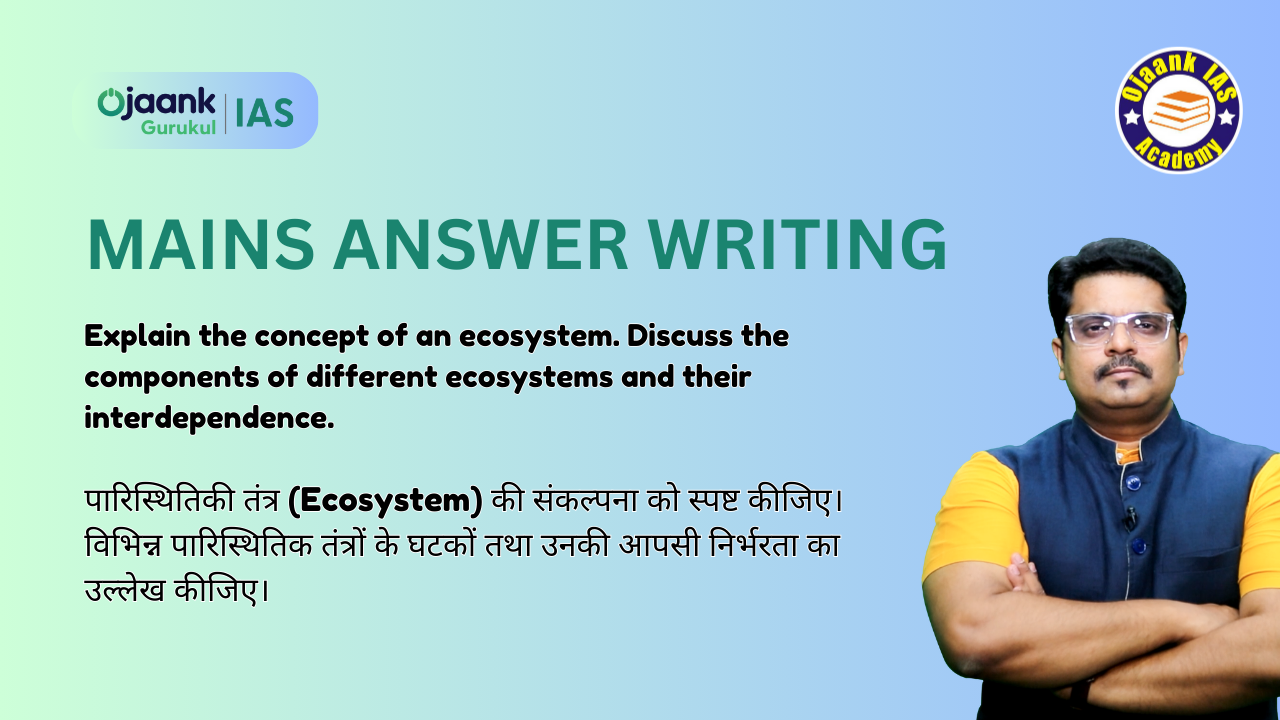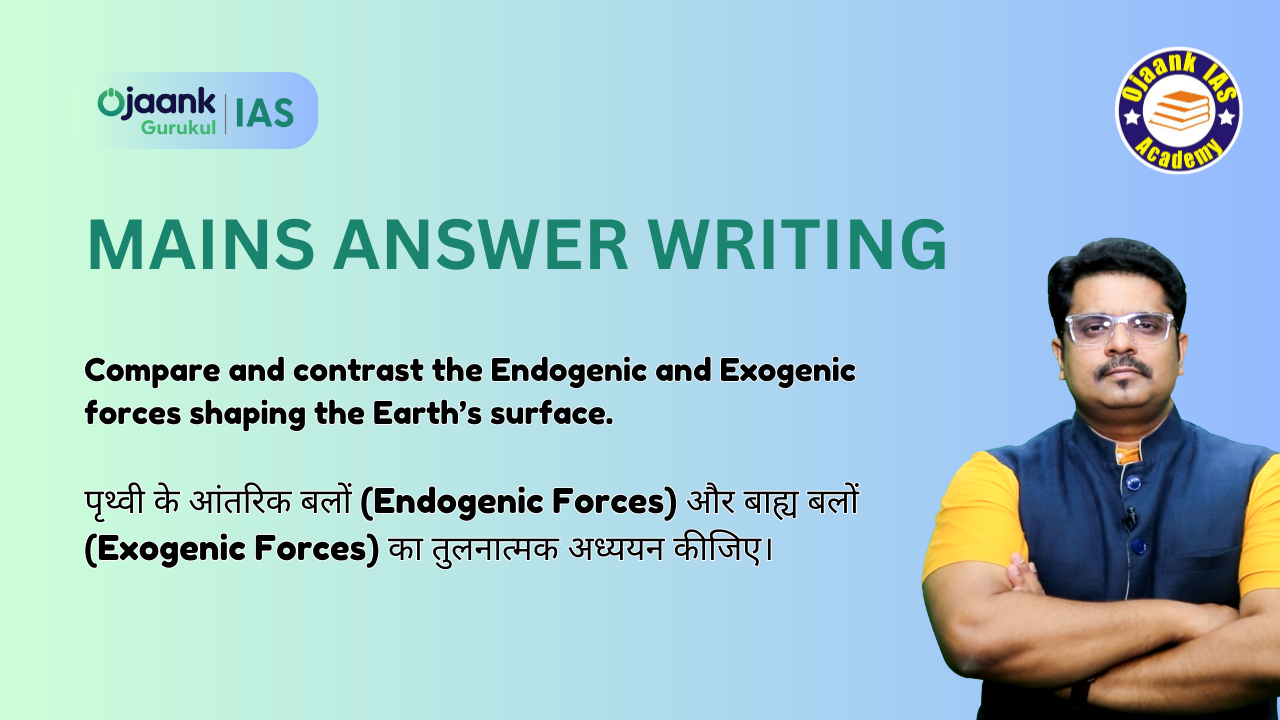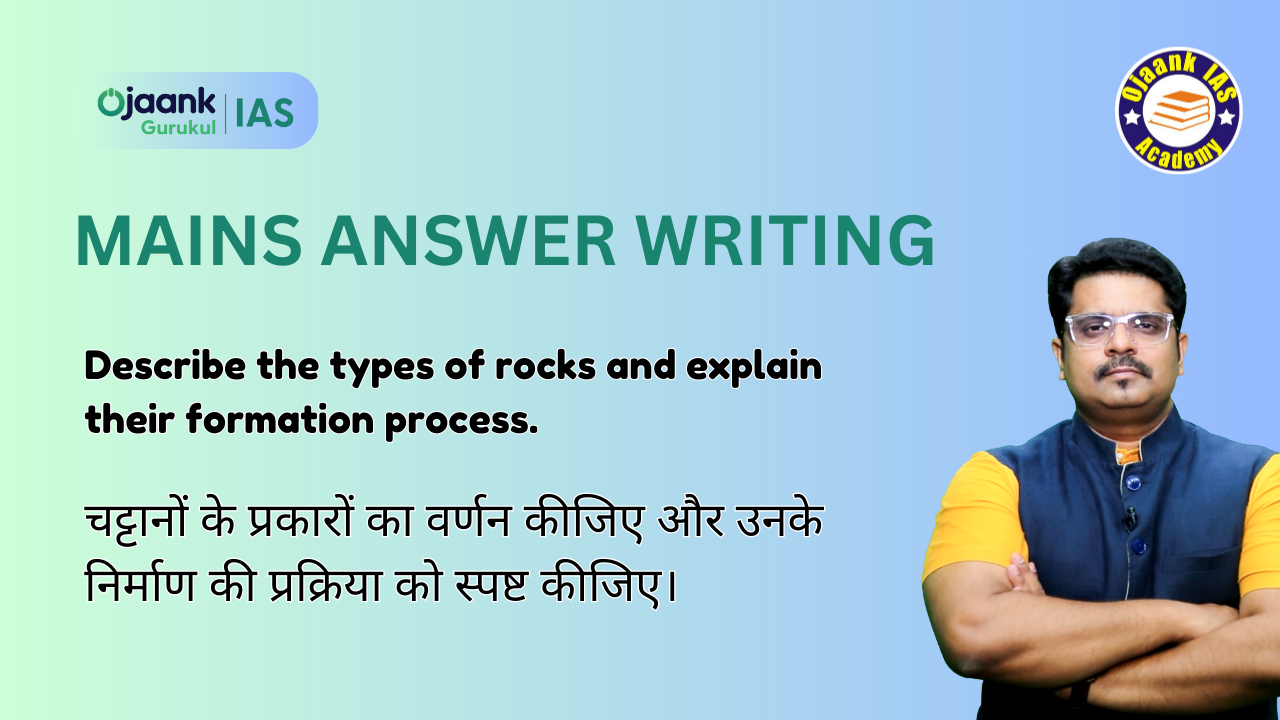Explain the concept of an ecosystem. Discuss the components of different ecosystems and their interdependence.

Definition of Ecosystem
An ecosystem is a system where biotic (living) and abiotic (non-living) components interact with each other.
It involves the flow of energy and cycling of nutrients.
Components of Ecosystem
1. Biotic Components
These are the living parts of the ecosystem:
-
Producers:
-
Plants and algae
-
They convert solar energy into chemical energy through photosynthesis.
-
-
Consumers:
-
Herbivores, carnivores, and omnivores
-
They depend on producers or other organisms for food.
-
-
Decomposers:
-
Bacteria and fungi
-
They recycle dead organic matter into nutrients.
-
2. Abiotic Components
These are the non-living physical and chemical elements:
-
Sunlight
-
Water
-
Air
-
Soil
-
Mineral substances
These elements support the growth and survival of biotic components.
Types of Ecosystems
1. Terrestrial Ecosystem (Land-based)
-
Forests
-
Grasslands
-
Deserts
-
Tundra
2. Aquatic Ecosystem (Water-based)
-
Freshwater: Lakes, rivers
-
Marine (Saltwater): Seas, oceans
Interdependence of Components
-
Plants provide oxygen and food, which are consumed by animals and birds.
-
Decomposers convert dead organic matter back into nutrients, enriching the soil.
-
The flow of energy and nutrient cycling help maintain the balance of the ecosystem.
Conclusion
-
Ecosystems are essential for maintaining natural balance.
-
Human interference can disrupt this balance.
-
Therefore, sustainable development is necessary to protect ecosystems.
Copyright 2022 power by Ojaank Ias



-1744635146701.jpeg)


